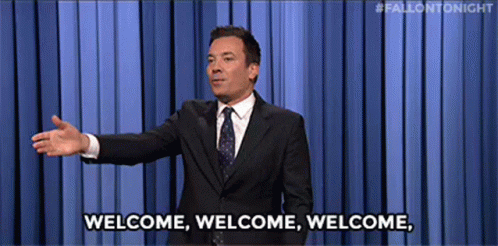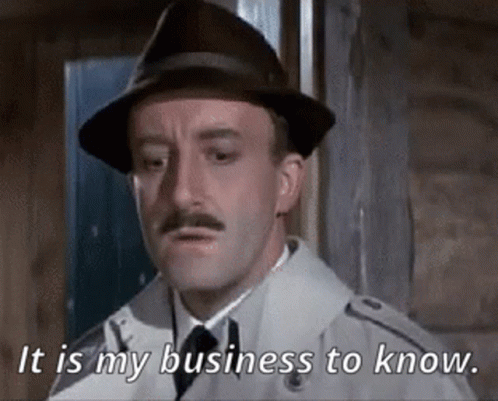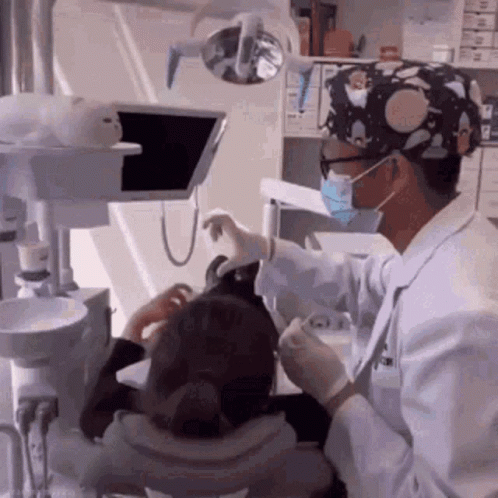
Our latest Curiosity Live meetup was, once again, a fantastic gathering of curious minds in human-first dentistry. With folks like Alessandro, Tara, Carol, Manuel, Sheila, Jan, and Maria joining the lively discussion, we dove deep into the heart of what it means to put humanity first in our dental practices.
In just 75 minutes of a rich, collaborative "chit-chat," we ended up exploring well over 20 crucial topics that are shaping the future of our profession. Here's a detailed look at the insights we discussed, from refining patient care to expanding our impact beyond the dental chair.
🤸 The deep dive into a human-first practice

- Extending quality time with patients: 20 minutes often isn't enough time for quality care and a genuine connection with the patient. We explored the vital shift from the standard 20-minute slot to a more impactful 45 minutes or even an hour. We even discussed the idea of offering "10 minutes extra first, then never again" as a strategic way to introduce this enhanced time.
- The art of relationship building: We emphasised that building strong relationships with patients is the bedrock of human-first dentistry. This goes beyond clinical procedures; it's about fostering trust and rapport.
- Shifting responsibility: An advice-oriented method can inadvertently leave the sole responsibility for oral care in the hands of the doctor, making patients feel less accountable. Our conversation centred on empowering patients to take ownership of their oral health.

- Oral care in diverse family structures (nanny vs. oral care): A fascinating point was raised. The challenge of instilling oral hygiene habits when primary caregivers might not be parents, such as with nannies. This highlighted the need for broader educational approaches.
- Challenging how dentistry is marketed (veneers vs. prevention): We grappled with the modern challenge of how dentistry is often sold and marketed. The allure of quick fixes like veneers often overshadows the crucial importance of prevention, creating a hurdle for promoting long-term oral health.
- Good dentists ask great questions: The power of inquiry was a central theme. We explored how asking insightful questions like "Why are you here?" and "What do you want?" can immediately empower patients and guide the consultation effectively.
- The patient's arrival: crafting a great introduction: The moment a patient steps into the clinic is critical. We discussed the art of the introduction, emphasizing the importance of setting goals and expectations from the outset. We also touched upon the principle of compassion, acknowledging that "you never know who needs compassion."

- Moving beyond scaling and root planing: While essential, we discussed how to evolve basic scaling and root planing into a broader conversation about long-term oral health and prevention, going "further" than just the immediate procedure..
- Overcoming memories of school dentistry: We lightened the mood by acknowledging common, often less-than-positive, memories of school dentistry. This topic was deemed excellent for future "chit-chat" for jokes, highlighting the need to create more positive patient experiences.

- Dealing with necessary pain: avoiding the "sadist" label: A sensitive but important topic was how clinicians can manage patient discomfort during necessary treatments. We explored steps in patient interaction to ensure we don't inadvertently "inflict pain" or make patients feel we're "sadistic," focusing on communication and empathy.
- Good examples of evidence-based medicine in dental practice: We looked at practical applications of evidence-based medicine within a dental setting, emphasizing the importance of grounding our practices in scientific evidence.
- The power of non-verbal communication - emotions are contagious: A significant discussion point was the impact of non-verbal cues. We stressed that "emotions are contagious" and can easily "leak out" from clinician to patient, affecting the consultation. Awareness of our own emotional state is key.
- The "you're my favorite patient" approach: We humorously, yet seriously, discussed how treating every patient as if they're our "favorite" – and then clarifying that all patients receive the same high level of care – helps to build rapport and trust, especially with those who might feel overlooked.
- Working with your own motivation as a dentist: We delved into the internal drive of a dental professional. What truly motivates us? How can we maintain consistent motivation across diverse patients and challenging cases? We shared reflections like "this is my best feeling" and "I am better than the last time" as personal motivators.

- Dentists as frequent medical contacts: We highlighted the unique position of dentists as medical professionals who often see patients more regularly than any other doctor. This frequent contact brings with it significant responsibility for broader health oversight.
- Collaborating with other medical professionals: We discussed the growing necessity of working seamlessly with other medical professionals, fostering a more integrated approach to patient health.

- Inspecting patient habits: Our conversation extended to the importance of actively inquiring about and "inspecting" patient habits beyond just oral hygiene, recognizing their impact on overall health.
- Inflammatory-driven diseases: connecting oral health to systemic conditions: A critical area of focus was understanding and communicating the link between oral health and inflammatory-driven systemic diseases like cardiovascular disease, diabetes, and Alzheimer's, guiding patients to relevant specialists.
- "Patients speak": understanding disease from their perspective: We recognized the value of hearing "what it feels like to have this or that disease" directly from patients, drawing parallels to how other medical conditions are discussed in public forums.
- The spine-teeth-posture connection (physiotherapy x orthodontics intersection): A fascinating interdisciplinary topic explored the relationship between spinal health, posture, and dental conditions, particularly the intersection of physiotherapy and orthodontics.
- Motivating teenage patients: We tackled the challenge of engaging and motivating teenage patients, who are often prone to neglecting oral hygiene. This included insights into "motivating your patient's inner teenager" by respecting their autonomy and connecting oral health to their self-image.

- The impact of family routines ("I never saw my parents brushing"): We underscored the powerful influence of family routines and parental role-modeling on a child's oral hygiene habits, noting that some may have grown up never seeing their parents brush.
- Leveraging control for kids: Tactics to relax child patients: We shared effective tactics to relax child patients in the office, emphasizing the importance of giving children a "level of control," such as letting them choose their toothbrush or toothpaste flavor. Making it a "game" was also highlighted as a powerful tool.
- The rise of dental influencers: We observed the emergence of "dental influencers" on platforms like YouTube, noting how engaging content (like disclosing tabs) can motivate and educate younger generations, while also cautioning against misinformation.
- Transferring know-how in a growing clinic: We addressed the challenge of maintaining consistent coaching and empathy principles as a clinic expands. Solutions included creating Notion pages for guidelines, utilising quality management systems, and fostering non-protocol communication via platforms like Slack to keep the team informed and engaged.

- Empowering dental nurses: So many things they can do: We highlighted the vast, often untapped, potential of dental nurses, emphasising that there are "so many things that nurses can do" to contribute to prevention and patient education, extending care beyond the dentist or hygienist.
- Before the patient steps in: How to prepare yourself for treatment: This expanded on the idea of preparing our own mindset and emotional state. We stressed that our internal state affects the patient, and a "top-to-toe check" before the consultation can prevent transmitting stress.
- How can we talk to people who are not in our chairs?: A crucial question for the future of prevention: how do we extend our message beyond the clinic walls to reach the broader community? This involves exploring opportunities like school and youth groups, and local media contributions.
🎯Closing reflections on the power of communication
As our session concluded, powerful closing thoughts resonated throughout the group:
The event left everyone feeling inspired and re-energized, a testament to the power of a curious, human-first community dedicated to shaping the future of dentistry.
